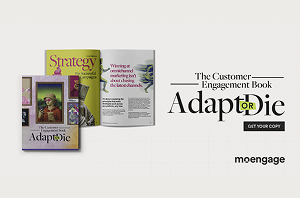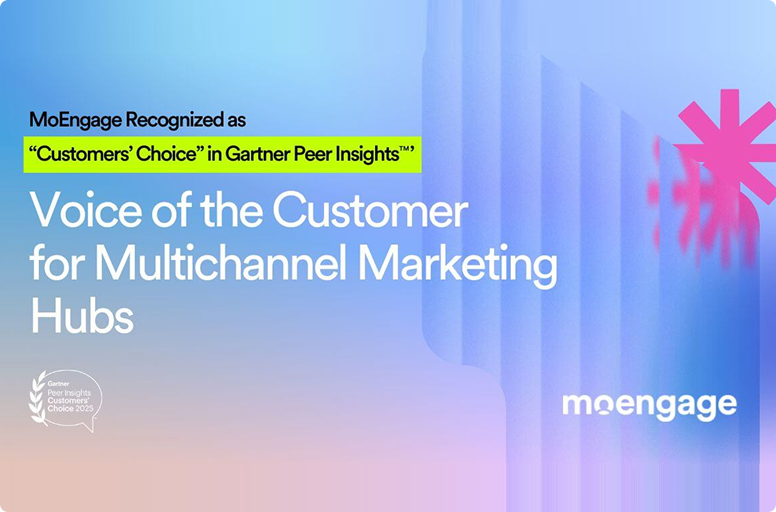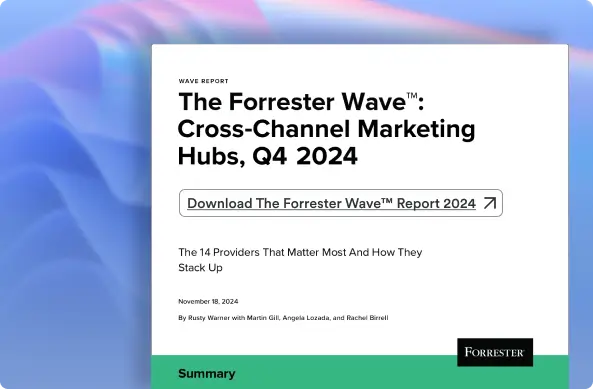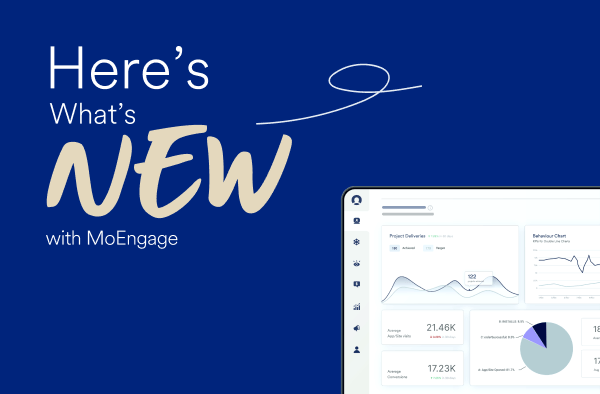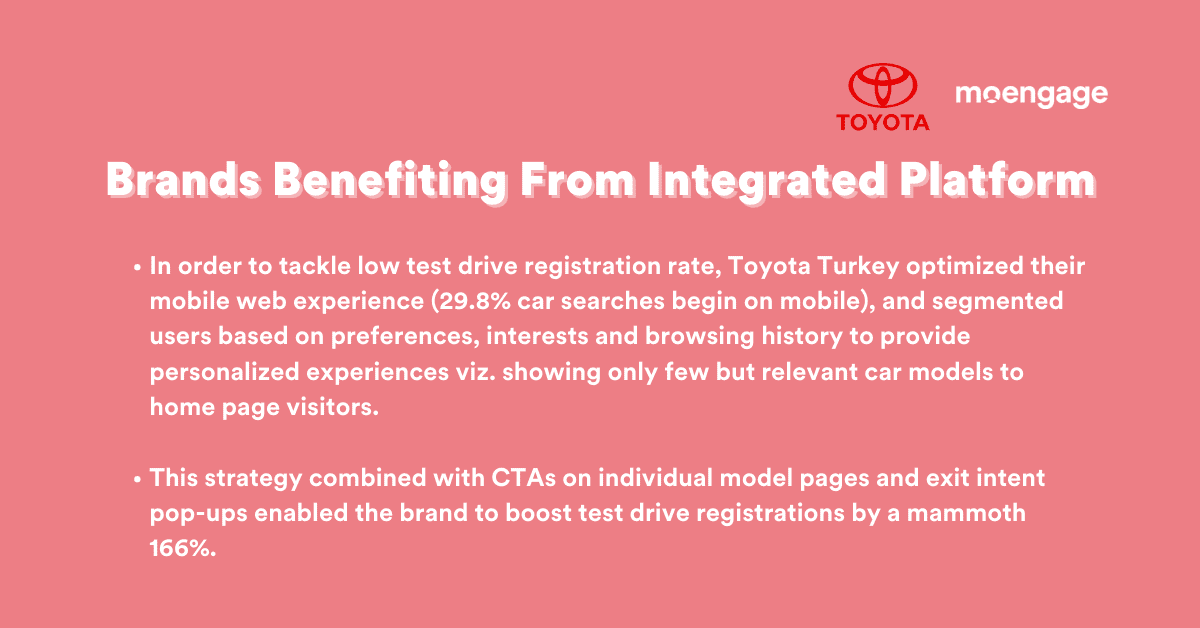Point or Integrated Solution: What’s the Better Alternative for Customer Engagement?

Reading Time: 8 minutes
In the previous few articles, we discussed the necessity of an engagement platform for modern growth teams, questions to ask while choosing an engagement platform, and the warning signs that your brand needs an engagement platform. In this article, we are going to answer one of the most hotly debated questions when it comes to choosing a solution: Point or integrated platform, which is better?
According to the research that went into building the two-volume buyer’s guide to customer engagement platform, the most commonly cited problems while implementing a customer engagement platform are:
- confusion between choosing a point solution and an integrated platform
- unsure whether to buy a third-party solution or build one in-house
After covering the build vs buy debate, it is time to address the conversation around point vs integrated platform.
But before we dive into the topic at hand, here’s a question for you: Would you rather have a customizable action figure of a superhero/heroine or a wooden block figurine?
If you chose the former, then you value customizability over one single specialized function. This also happens to be one of the biggest deciding factors over swinging either way.
Let’s establish the clear differences between a point solution and an integrated platform before we begin to compare the pros and cons of each.
Understanding the fundamental difference between point and integrated solution
The fundamental difference between a point solution and an integrated platform is two-fold: flexibility and scalability.
Point solutions aim to resolve a single functional gap specific to a channel by using best-of-breed features. An integrated platform, on the other hand, solves multiple use cases and can be rolled out across different business functions. An integrated platform is essentially a perfect blend of intelligently designed software along with a supporting partner environment that makes it easier to meet the current requirements while scaling to future needs. Apart from delivering on its value propositions, a platform increases your ROI exponentially through partner ecosystem and integration capabilities. The robust and versatile integrated platform has time and again proven to be a guaranteed growth enabler for organizations.
A point solution on the other hand, while perfectly catering to its value proposition, is limited in terms of expansion. You only get what you pay for and in case of any customizations or changes, you’ll have to adhere to the company’s release schedule. While platform solutions make customizability or expanding into other functions look easy, it actually takes a lot of effort, time, and resources to partner and integrates. Hence, you are stuck with multiple best-of-breed solutions which in turn create silos with limited to no communication leading to a breakup in collaboration.
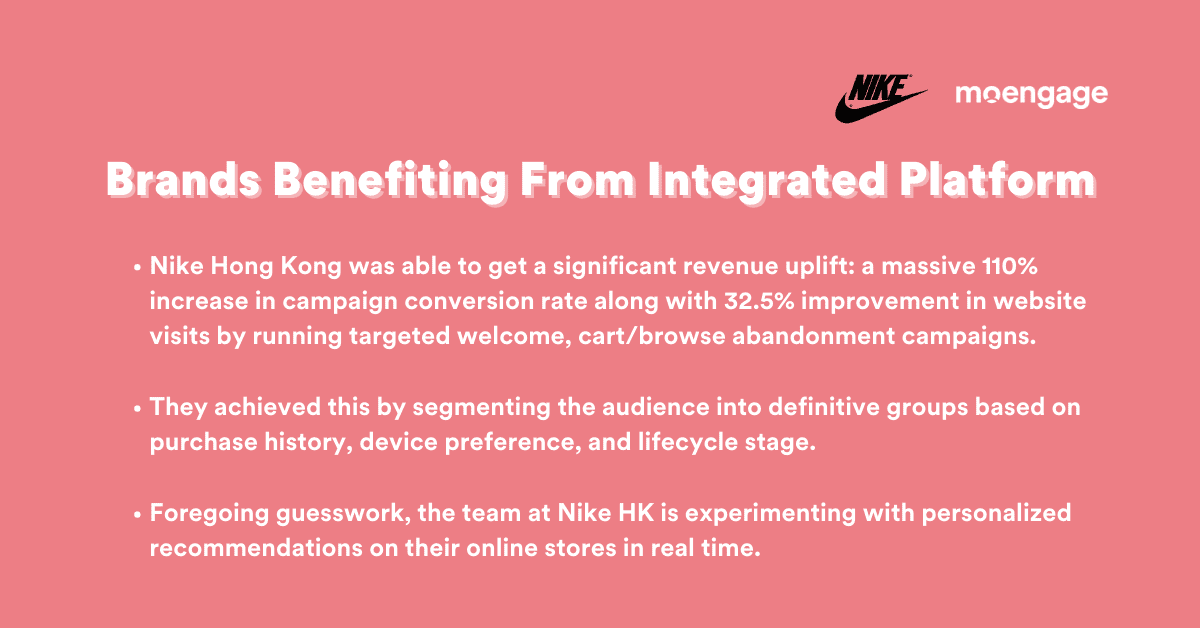
Check out our two-volume, buyer’s guide for deeper insights and detailed information on point vs integrated platform debate, build vs buy problem, and much more
Implementation problems with a point solution
As already mentioned, the problem with implementing a point solution for your omnichannel engagement is that you might end up creating organizational silos with limited access to customer profiles and channel wide processes. In today’s ecosystem where both customers and brands prioritize a unified and connected experience across all channels, a siloed approach offered by point solutions is a bad idea. While an integrated platform enables seamless data sharing and optimizes organization-wide omnichannel processes, it often translates into a bigger investment upfront and organizational overhaul. It is extremely important to choose a vendor carefully by analyzing ROI with respect to integration time and effectively manage the implementation process end-to-end. Now, that you’re aware of the fundamental differences between point vs integrated solution and understand the implementation problems, let’s get down to a side-by-side comparison:
| Point Solutions | Integrated Platform |
| Multiple systems in place with several databases and various vendors to manage | Integrated, end-to-end business processes throughout all modules in the platform |
| Complex training and coordination with multiple parties, not only increasing effort but also cost | Simpler training and coordination owing to fewer integrations and lower implementations, thus reducing cost |
| A complex ecosystem of standalone technologies integrated together | A simplified approach to cross-channel reporting and tracking |
| Difficulty troubleshooting when problems arise across different tech integrations | Single technology partner for all troubleshooting and maintenance issues |
| Absence of 360-degree view of customer and interactions across touchpoints | 360-degree view of customers and promotions on a single platform across channels |
| An additional burden on IT to support and maintain multiple systems | Lower maintenance cost as a result of a single technology stack |
| Best-of-breed solution specific to one department, often not benefiting the entire organization | Enables smarter promotions, providing other teams with up-sell and cross-sell opportunities |
| Managing constantly changing applications, interfaces, and data models | Convenience and ability to innovate and adapt to changing market trends |
We hope this comparison in the tabular format has helped you understand the pros and cons. But if you’re still confused, worry not, we’ll summarise the benefits of an integrated platform, show you why point solutions won’t work in the mobile-first world, and provide you decision-making tips.
What are the benefits of choosing a platform?
- A platform is more flexible in its approach, allowing capability expansion and accommodating the needs of your growing business.
- A platform is totally scalable letting you cater to changing needs of the market. Don’t compromise on scalability because your current needs are barely being met.
- A platform lets you best utilize your resources to differentiate yourself by freeing up time that would otherwise be spent working on multiple best-of-breed solutions.
- A platform owing to its healthy partner ecosystem allows you to test with a wide variety of features and solutions without locking you in one.
Why point solutions not built for the mobile-first world might not work for you?
While best-of-breed point solutions resolve the pain point at hand but they do so with a singular focus. This leads to the creation of a large number of standalone, pain point-specific solution buckets which not only hamper communication and collaboration but also affect the omnichannel experience. In this age of mobile-first experience, having a point solution poses certain problems, let’s have a look at some of them:
- Time delay in understanding technicalities: While platforms easily integrate with your existing stack, point solutions essentially require your team to understand how the new integration works. Now, instead of understanding the framework and accomplishing tasks, your workforce needs to be trained to get the best results. This leads to an initial delay in understanding the technicalities before settling in. Implementing a new solution to improve your business processes is great but a smooth integration and playing well with your existing stack should be a priority.
- Quick delivery by sacrificing stepwise integration: One of the most commonly cited advantages of a point solution is its quick delivery. But through an agile framework, integrated platforms can provide quicker rollout while ensuring expansion as and when the business grows. You can now integrate features stepwise as you please, based on your understanding and business importance, with the help of a dedicated development team that will keep you abreast with the recent market advancements.
- Limitations of being too specific: As discussed throughout the article, point solutions help with one pain point while requiring you to integrate new tech to accomplish other tasks. With an integrated platform, you have the option of resolving multiple use cases involving various business functions without moving to a new platform.
- Limited scalability: It is abundantly clear that an integrated platform enables you to address several pain points while being open to scale functionalities as required. As your business grows and owing to the market changes if you need to expand or extend, you can do so quite easily. All you need to do is reach out to the vendor, and the development team will assist you in customizing as per your need. A point solution can’t possibly accommodate this level of customization.
- Lack of long-term benefits: While a point solution with its quick fix of resolving a pain point might sound lucrative, but look at the bigger picture of being scalable when required. The long-term benefits of an integrated platform outweigh the shorter and quicker gains, something you must remember while deciding to invest in either point or integrated solution.
An integrated platform provides you scalability and flexibility advantages, not to mention the profits, exponential ROI, business growth, and long-term benefits of being future-ready.
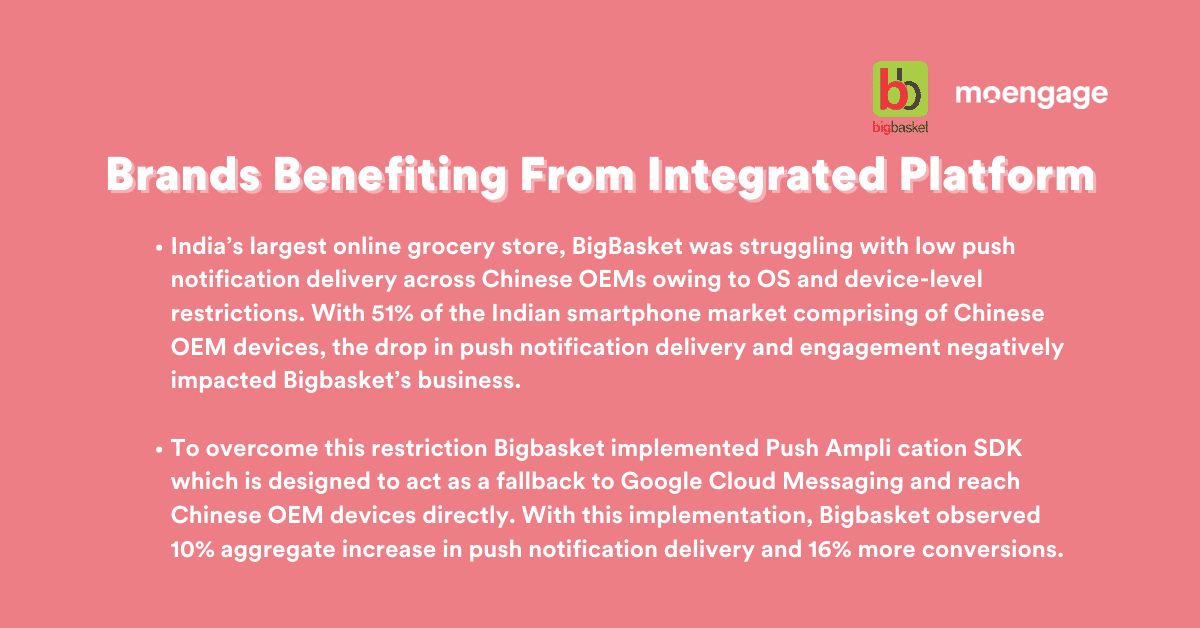
Deciding factors while choosing the right solution for your business
Let’s break this down further to help you understand what exactly you need based on business priority. Here’s a look at some of the deciding factors:
- Time: If you have a time constraint to roll out a solution for a specific problem, then a point solution will be your best bet to go to market quickly. However, be wary of the integration and maintenance costs. If your organization values long-term benefits over short-term gains then you can choose an integrated platform.
- Budget: Conduct an ROI calculation based on what each department’s requirements are in terms of point solutions versus the cost incurred for getting an org-wide integrated platform. While certain teams might not want to hold off on the purchase of a point solution if the long-term benefits drown out the short-term gains then the choice is clear. Ensure the team/individual working on the ROI calculation has a proper understanding of the scope of an integrated platform, cost savings, and revenue opportunities generated as a direct result across various functions.
- Strategy: Last but definitely not least, future business strategy and roadmap are essential when deciding to go with either a point solution or an integrated platform. Involve stakeholders and C-suite folks to understand if a point solution in your stack will be enough to drive growth. You also need to ask yourselves if you’d need to retool again in the near future owing to the limitations of the present solution. Will your IT team be able to handle multiple, standalone, point solutions or would it be easier to manage an integrated platform? Answering these questions will you give you a clear idea of how to choose the right solution.
- Resource allocation: While a point solution doesn’t offer an end-to-end business process, 360-degree customer view, and cross-channel reporting/tracking, integrated platforms also come with some challenges which are worth addressing. First of all, there is the issue with significant upfront investment and the conviction for it. Secondly, you need a team to fall back on in case of any pitfalls. If your organization can’t allocate resources and a dedicated team then maybe continuing with a point solution is a good option till you have dedicated resources or a team in place.
Now, that you are armed with all the pros, cons, and have weighted the short-term/long-term benefits of point and integrated solution, it is time to leave you with tips that’ll help you choose better.
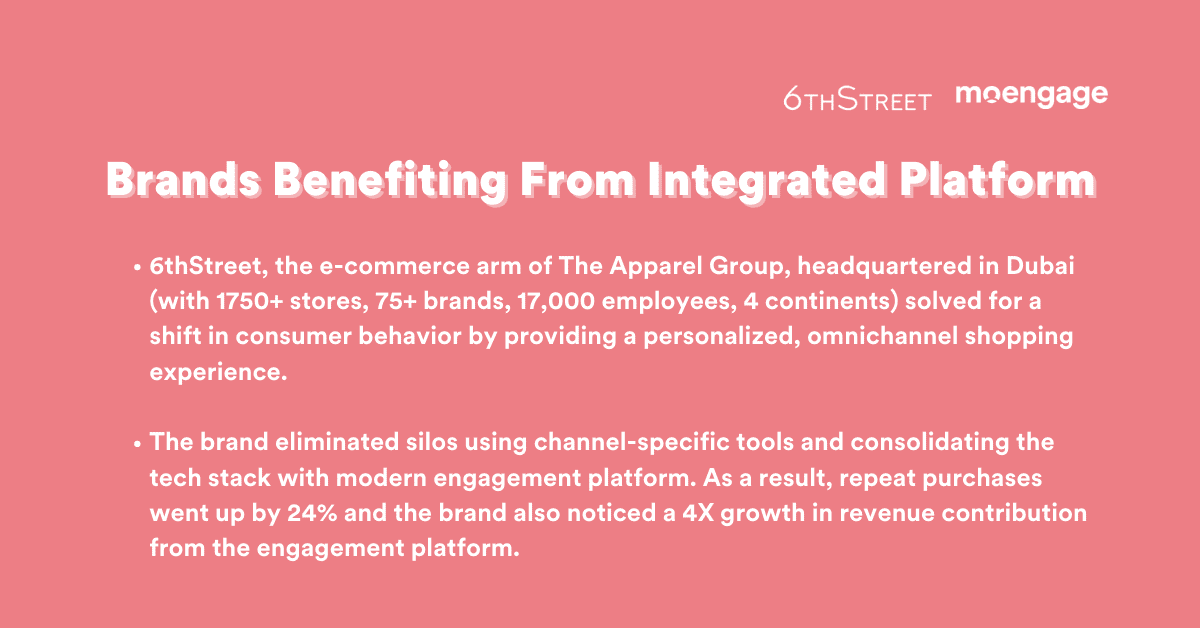
Tips to choose the right platform
- Compare your organization’s core requirements with the solution provider’s offerings to see if your needs can be met with competence.
- Check for the partner ecosystem, test the robustness, engagement, and growth.
- Question about the status and health of the feature roadmap and demand a detailed walkthrough so as to understand the future plans and check if they align with yours.
- View the documentation and examine the ease of use of their open APIs.
Check out our blog on the 10 questions you need to ask while choosing an engagement platform for detailed insights!
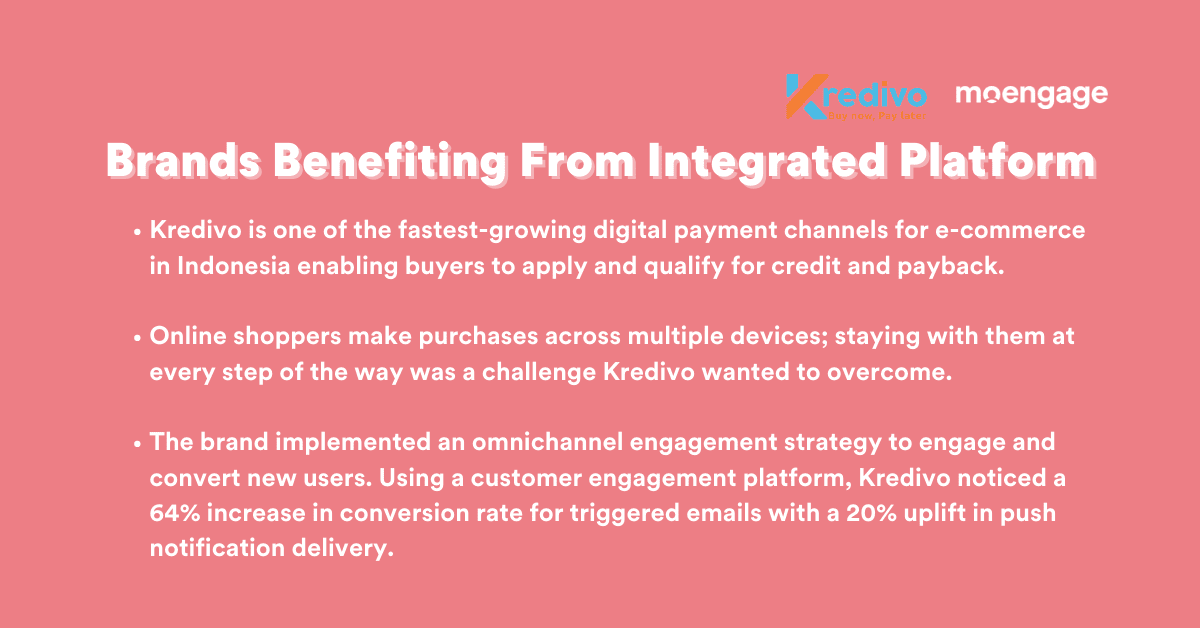
What should you do next?
|

